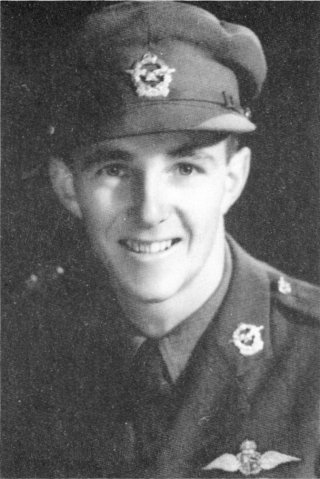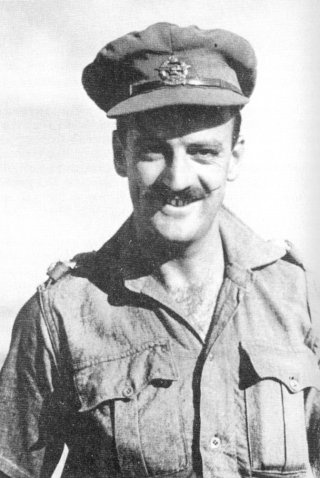

 The South African
The South African
by Richard Foregger MD
* Charles Barry, former pilot SAAF and Captain, DFC, is a journalist living in Johannesburg, South Africa; navigator Ian McIntyre died some twenty years ago in Cape Town, SA.
This report describes Barry's historic and dangerous mission. In his own words, he recounts the events at Oswiecim (Auschwitz) during the flight of 4 April 1944:
'Ian [Ian McIntyre, the navigator] and I began our first photographic run from west to east, if memory serves correctly. He immediately advised me that the port camera was not working (the two long focal length cameras were mounted in tandem to give overlapping lateral coverage). This gave us a total lateral coverage of about 5 miles [8 km] on the 20 inch [50 cm] cameras. It was unhealthy to hang around with a second run in an unarmed aircraft because of possible enemy interception. Nevertheless we decided to do two runs instead of one to ensure positive coverage. Ian left the cameras running longer than usual and I believe that the over-run on the east to west run pulled in something of the death camp later known as Auschwitz.'(l)
The post-mission Interrogation Report(2) reveals that enemy aircraft were sighted by Barry and McIntyre but the unarmed Mosquito was fortunately not attacked. Barry's logbook notes that there was trouble with the non-functioning camera and also with the generator of the aircraft engine. The trip, largely over enemy held territory, required five hours. Barry continued his account:
'You may also be interested to know that we had no inkling of the camp being there, and it wasn't until the Holocaust Revisited report was published in 1979 that I and my surviving colleagues from 60 Squadron realised that we had unknowingly been involved in identifying the death camp.'(3)

Lt Charles Barry, DFC

Lt Ian MacIntyre
Brugioni and Poirier, expert photoanalysts with the US Central Intelligence Agency, examined all the available, unclassified, aerial photographs taken over the Auschwitz area during World War II and found that the first Allied reconnaissance aircraft approached the large I G Farben plant on 4 April 1944. Their examination in 1978 of the film from this mission provided photographic evidence of a concentration camp at Auschwitz. Brugioni and Poirier state that the gas chambers and crematoria installations could not have been identified with the military photo-analysis techniques of 1944. They write, 'The World War II photointerpreter probably could identify nothing more than the Farben plant and some labour/prisoner of war camps.'(4)
Colonel Roy Stanley, aerial photoanalyst with the US Defense Intelligence Agency, also examined these unexpectedly acquired Auschwitz-Birkenau aerial photographs taken in 1944; he, too, confirmed that the extermination facilities could not have been identified with the equipment and techniques available at that time.(5)
Notes
1. Letter dated 30 November 1987, from Charles Barry, Johannesburg, South Africa, with copy of relevant page from Lt Barry's Logbook dated 4 April 1944, to R Foregger.
2. Interrogation Report, Mediterranean Allied Photo Reconnaissance Command (Ref. A1R27/568/XP1948) 4 April 1944. (Public Record Office, London.)
3. Brugioni, Dino and Robert Poitier, The Holocaust Revisited: A Retrospective Analysis of the Auschwitz-Birkenau Extermination Complex (Washington, D.C., Central Intelligence Agency, 1979. ST-79-l0001).
4. Ibid., Brugioni and Poirier incorrectly state (p. 2) that an American reconnaissance aircraft made the mission. Martin Gilbert, in Auschwitz and the Allies (New York, Holt, Rhinehart and Winston, 1981), p. 190 also makes this error.
5. Stanley, Roy, World War II Photo-Intelligence (New York, Scribners, 1981). (p. 345) Col Stanley correctly notes that the photoreconnaissance aircraft was from 60 Photo Squadron, South African Air Force.
Return to Journal Index OR Society's Home page
South African Military History Society / scribe@samilitaryhistory.org